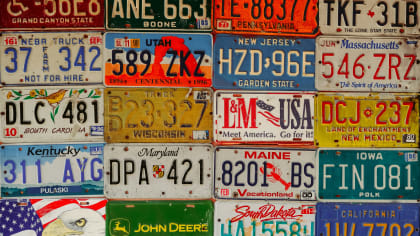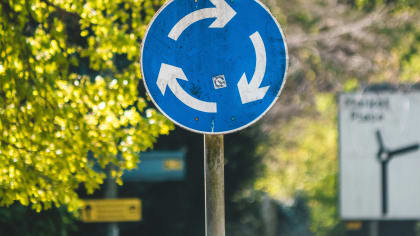RIVERSIDE INTERNATIONAL RACEWAY
A photographic tour of the historic track, its legendary races and unforgettable drivers
This article is from our archives and has not been updated and integrated with our "new" site yet... Even so, it's still awesome - so keep reading!
Published on Mon, Mar 2, 2015
By: The LACar Editorial Staff

BOOK REVIEW
RIVERSIDE INTERNATIONAL RACEWAY
A Photographic Tour of the Historic Track Its Legendary Races and Unforgettable Drivers
By Pete Lyons
Foreword by Dan Gurney
Book design by Richard M. Baron
Spry Publishing, LLC (www.sprypub.com)
ISBN 978-1-938170-11-9
$49.95 USA, Canada
Reviewed by Doug Stokes
Riverside International Raceway and Pete Lyons.
I simply cannot think of a better combination. As the above title and author information promise, the award-winning motorsports writer has turned his talent to weaving together the story that resides in an incredible array of photos using his unique writing style and personal perspective. In this beautiful book, Pete takes his readers on an eye-witness tour though three decades of the wide world of motorized competition that took place at the iconic Riverside International Raceway.
For 33 incredible years RIR was the beating heart of West Coast road racing. From its first race on September 21, 1957 to the very last of the “last ones” July 1, 1989, “Riverside” (it only had one name for us) was the place where professional American road racing truly came of age.
Riverside was, by turns, dusty, dirty, windy, burning hot, and bitterly cold. It was also big, fast, scary, very bad at taking prisoners, and we loved the place. Here, Pete Lyons retells the incredible story of what this rocky chunk of scrub desert land came to mean as one of world motorsports’ most respected race tracks. His work is (as always) as expository as it is reverent. In this book’s 224 pages, Lyons adds life to the legends and lore that are so much a part of this place located about 65 miles east of downtown Los Angeles.
Name a series: CSCC, SCCA, USAC oval track big cars and midgets, the United States Road Racing Championships, IROC, Trans-AM, AMA motorcycle racing, CART/Indy Cars, Formula 1, Can-Am & Can-AM II, NASCAR, Formula 5000, IMSA, NHRA, Vintage, and even SCORE off-road racing. All ran incredibly competitive championship events at RIR. And all are represented well in this book.

Name a top driver from the 60s, 70s, or 80s—and the chance that they competed at the Raceway are about half a click under one-to-one.
Simply listing the drivers who really only need one name to be recognized might take two pages and be highlighted by this pantheon: Andretti, Bondurant, Braham, Clark, Donohue, Fittipaldi, Follmer, Foyt, Gurney, Hall, Hobbs, Hill (both Phil and Graham), Parnelli, Lunger, McLaren, Moss, McGriff, Mears (both Rick and Roger), Newman, Penske, Posey, Pruett, Rahal, Redman, Revson, Rosberg, Shelby, Stewart, St. James, Tambay, Unser (just about all of them), Ward, and Yarborough.
Lyons’ choice of chapter titles telegraphs some of the flavor of this book, like Chapter 3: “The Desert Fills with Stars” chronicling the early events that drew well-known professional drivers from far and wide as well as early car-nut Hollywood types out to the new facility.
“For Love of the Sport” deals with the Cal Club and Sports Car Club of America amateur sports car racing that was also part of the lifeblood of the Raceway. There were many stand-alone events where hundreds of entrants in multiple divisions that had the whole place to themselves. But it was also quite a rush for those same weekend warriors to find themselves as the (unpaid) undercard for one of the big Pro races like a USRRC, Can-AM, Trans-AM, or a Times GP show.
Pete’s chapters on NHRA Drag Racing and Motorcycle Road Racing are fairly brief and sort of match the kind of fan response that both of these disciplines enjoyed at Riverside. For gum-dipped fans of the straight-liners and the knee-scrapers the place was a great one with many of the young riders and drag racers who polished their early careers at the Raceway (like Eddie Lawson and Don Prudohmme) going on to huge successes and stardom at the very top levels of their craft.
But none of those shows ever got the huge crowds that the Stock Cars or the Can Am machines brought out. Pete even mentions the semi-infamous “1/2-Mile Drags” that were run early-on in the track’s life. Because the track had a straightaway that was over a mile long, the organizers decided that they could see some bigger top end numbers in 2,640 feet than in the (by then traditional ) 1,320. They could. And they also could see rods peeking out of crankcases by the numbers and stock tires destroying themselves as cars were run flat out for what turned out to be a very, very long time. There were six Hot Rod Magazine-sponsored NHRA (quarter-mile) national events that ran from 1964 to 1969.
His “Easter Eggs in Autumn” chapter gives insights into the International Race of Champions (“IROC”) events that featured what had to be the best ever national and international driver participation ever. To my mind, and still to this very day, no other “all star” driver gathering anywhere in the world has ever had the sort of star power that the Riverside IROC races attracted. The reference to “Easter Eggs” was a comment on the wide range of colors that the IROC cars (the first gen machines were Porsches and Chevy Camaros thereafter) were painted. There were pink, robin’s egg blue, purple, and bright yellow machines to go along with the more traditional red, black, white, blue, etc hues. And the racing? It was as heated, brilliant and hyper-competitive as any F1, NASCAR, or Can-Am championship race ever run anywhere on the planet. These guys were all smiling and joking in the group photos and all business when the green flag flew!

In “Who Needs Pavement” is the story of how short course off-road racing impresario (famous for filling the LA Coliseum up with dirt and jumping dune buggies and off-road trucks off the iconic peristyle end of the two-time Olympic venue) Mickey Thompson designed one of the wildest off-road courses ever. He created it using almost every square inch of the Riverside real estate (be it dirt or paved). Hoards of high-powered off-road buggies and racing trucks running at speeds broaching 100 miles per hour hurtling down the “wrong way” (south) along the high-banked dirt edges of the esses on “Thompson’s Ridge” was an unforgettable image for anyone who attended. Those races and the raucous campouts that lit up the night with lit up fans and racers were another chapter of legendary place … and the last big crowd, pro event at the place.
There’s an afterword written by Fritz Duda, who was one of the long roll call of executives/owners/caretakers/investors that operated Riverside over the years. Duda was there near the end and here he adds his own viewpoint as to the demise of the facility. A sad photo that’s associated with this section looks northward where T9 is still standing, but almost all the rest of the track is being turned over and roughed up by giant earth moving equipment.
One other name that looms large in the RIR firmament is the late Les Richter. He was a retired Hall of Fame professional football player hired on because of his expertise in the real estate field and to whom many attribute the greatest successes of the facility. As track president he was a no-nonsense guy who really made Riverside work and work very nicely. “Coach”, as he was universally called by one and all, went on to become a well-liked and highly-respected top official in NASCAR.
A kind word is also quite appropriate here for the art direction of this beautifully presented book of memories. Consummate publishing pro Richard Barron has done a terrific job of picking out and arranging the hundreds of photos that make this book such a treasure. In this book, 1+1 (words and the pictures) add up to far more information than either one of them could ever transmit alone.
Just for the record, there are over 500 photos and illustrations in this special salute to Riverside that Barron (with a little help from Pete himself, I suspect) selected from some 50 photographers, collections, and institutions many of which had never before been published.
There are a thousand times a thousand more stories about Riverside. This book that will doubtless jump start a torrent of them. If you were there, you want this book; if you were never there, you need this book. Either way, enjoy the laps! -DS

PERSONAL
I’m starting to think that I know why our Executive Editor always seems to call on me to review books like this … I’m the “senior” member of the staff and I sort of lived some of the subjects. In this case, Riverside was my racing home for many years.
Before I had a car or even a learner’s permit, I got my stepfather, Milt Bramstedt, to take me and my buddy Morrie all the way out to Riverside from Covina (at that time about a 45-mile no-freeway trip). What we saw was a scaved-out winding ribbon of dirt that was soon to be painted black with asphalt.
We were back for the first race (September 22, 1957), and of course, it was hot, dusty, thirsty and wonderful. That race is known almost as much for Carroll Shelby’s crash in T6 as it was for Richie Ginther’s* win in the Von Neumann 4.1 Ferrari.
Shelby’s Maserati hit the outside bank very hard, as the story goes (the Riverside stories started early and went right down to the last race, friends) the driver’s face was so badly rearranged by the hit that the surgeon who was tasked with putting him back together that he had to refer to Shelby’s photo in the event program.
Many years later another buddy, Scot Sanders and I were there at a Mickey Thompson off-road race where, at the end of the day, we scooped up a number of chunks of the track in the turn 1 area. That event was one of many which were said to be, “The last race at Riverside”. We still have some of those chunks, of course. One of them was embedded in the NASCAR track at Irwindale when it was being paved in 1998 just for luck.
I worked as a crewman on many race cars (including my own) at Riverside, Jerry Titus signed off my SCCA competition license there, and I won a Media/Celeb race aboard a Jim Russell School Merlyn Formula Ford just nosing out this book’s author (I still contend that Pete won, and he says I did … they gave me the flag but should have called it a tie.)
I also had my first ride in a car with any sort of add-on aerodynamic downforce devices at the Raceway … the first Jim Russell Hayashi/Mazda. The single-seat formula car had a giant rear wing and aero side pods that (which, for the time, exerted a whole bunch of stick). All these years later, I can still remember how my guts were crushed over into the left side of body cavity the first time that I got through turn 6 at speed … It was a life-changing experience for me.
We once put Phil Hill in a lay-down Enduro Kart at Riverside. He was there doing a review drive of a year or two old Ferrari 312 F1 for Road & Track and took a break to do what he told us were his first-ever laps on a Kart anywhere.
In December of 1988, I was invited to an Audi Driving Clinic at the Raceway hosted by Ludwig Heimrath, Jr. and Kathy Rude. It was a very rainy day, and none of the other “lifestyle” journalists (I was writing for a business magazine) who had been invited showed up for the event. This was the final configuration for Riverside. The course was unchanged from T1 to T6.

At the top of the T7A left-hander, instead of smoothly snaking back to the right, the course took an abrupt right turn and headed downhill, through the infield to finally hook back up just after the beginning of the T9 dogleg. At that point the entire T9 infield had been turned into a gigantic coffer dam that was (already) brimming with water. There was a five foot inner dirt wall all the way around T9 and I remember it was leaking muddy water out onto the inside edge of the track. Kathy Rude, bravely riding shotgun with me, kept asking me to get lower on the turn each time we came around and finally took the wheel (from the right seat) for a pass that was a whole lot closer to that crumbling coffer dam than I wanted to go.
Anyone from this edge of the map who raced there thought that the Raceway was as tough a racetrack as any in the country. When I helped out with the PR for a couple of the Riverside Reunions a few years ago I had the opportunity to ask a number of drivers who were not “locals” how they rated the place. Every one of them, from across the country and across the “Pond”, gave me a variation of the same theme: “Riverside was world class. If you could get it right there, you could get it right anywhere.”
And then there’s the sound of a Can-Am car totally tached-out and blowing under the Champion Spark Plug Bridge three-quarters of the way down Riverside’s long back straight. You felt that dull WHUMP! in your chest as much as with your ears. I can close my ears and still remember the thud.
One more.
When I worked for the International Kart Federation I had a map of Southern California on one wall of my office. It had a whole bunch of pushpins in it. Each pin marked the reported (or rumored) site for The Riverside Replacement. There were more sites cited than have been sure things for a Los Angeles area pro football team. I was even at a actual ground-breaking for one in the Lake Elsinore area with “Riverside in the name. I still have the damn press kit. None were ever built.
Sad to report that, just as this book was being published, the founder and principal of the Riverside International Automotive Museum, Doug Magnon, passed away after a brief illness at age 55. The museum was the site of the annual Riverside Raceway Reunion, and the source of a number of photos and reference materials which were used to complete this book. Doug will be missed greatly by all who knew him, as well as by the many fans that have benefitted from his founding of the RIAM.
*One needs to remember these were guys like Phil Hill, Dan Gurney, Tony Settember, Ronnie Bucknum, and Ginther—California drivers who all made their bones racing at Riverside and all went on to drive in Formula One. That was, and still is, the big deal about the joint.
Personalized, autographed copies of this book are available directly from Pete Lyons himself at petelyons.com USA (951)679-9796.

Editor's note: Pete Lyons will be at Autobooks in Burbank to sign copies of this book (and any others of his that are on sale there) on Saturday, March 7th,10am to 2pm.




